Outsourcing vs. Hiring in-house: The Real Cost Savings from IT Outsourcing
dedicated teamsoutsourcingoutstaffingvilmateA lot has been said and written about outsourcing software development. About the top reasons to hire Ukrainian developers, challenges involved in outsourcing app development, whether it is safe to hire an offshore development team, what outstaffing means, and how to manage dedicated teams’ availability.
What most businesses are really interested in when they get to explore outsourcing opportunities is how cost-efficient this is going to be and whether these economic advantages justify the potential trade-offs. That’s a good question that may genuinely cause managers to struggle with doubts and fears. We totally relate to these feelings and, for this very reason, continue writing blog posts addressing these general yet delicate topics.
Many businesses embrace outsourcing as a way to realize cost savings. However, what managers may not understand is that expected gains from IT outsourcing do not narrowly focus on the reduction of operational costs. Software development outsourcing can also help decrease other expenses, including general, sales, and administrative costs.
For the purpose of this article, we will focus on analyzing quantitative market research data, followed by our own experience of working with overseas clients. We will provide a detailed breakdown of the costs of in-house vs. outsourcing software development services for you to better understand the estimated drop in expenses you should expect delegating IT and non-IT functions to a company like Vilmate.
So, if you hesitate whether to outsource your development or build an in-house team, we’ve done all the heavy lifting and are excited to share our findings to help you make an educated choice!
Key statistics on outsourcing
Before we dive into the matter, let’s use some statistics to explain how things have been going recently in the landscape of outsourcing in general and in software development outsourcing in particular.
#1 In 2019, the global outsourcing market aggregated $92.5 billion, which is a substantial increase compared to $85.6 billion it amounted to in 2018.
#2 Outsourcing is not an exclusive prerogative of large firms as statistics claim. 37% of small businesses were reported to outsource their business processes in 2018, while more than one-third of the total of outsourced services were in the IT domain.
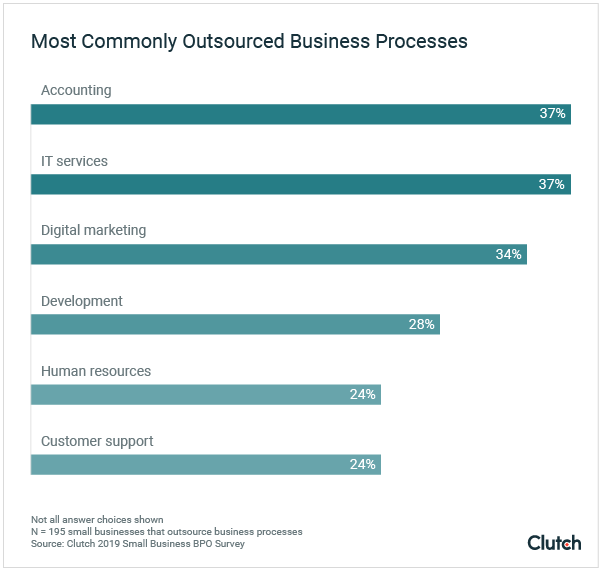
#3 In 2020, application development is outsourced, entirely or in part, by 60% of IT organizations. IT tasks require proficiency and skills that they might not possess internally. This is one of the main reasons for outsourcing frequency growth. The report also suggests that IT security outsourcing shows the most considerable growth rate of all outsourced functions. Thus, 55% of respondents report they plan to increase the amount of security work they outsource.
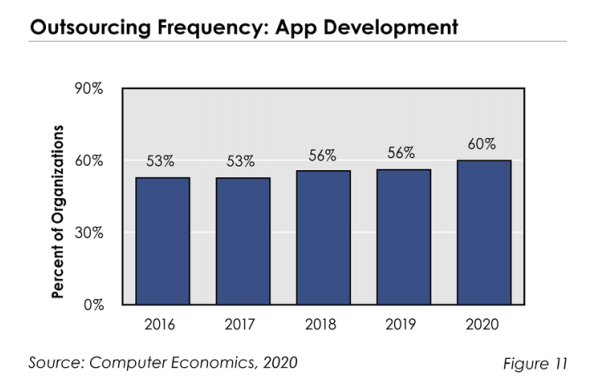
#4 Staggering 93% of survey respondents report that they are considering or have already adopted cloud services, as it allows companies that outsource to be more agile, more rapidly expand their offerings, enter new markets, and transform their internal operations.
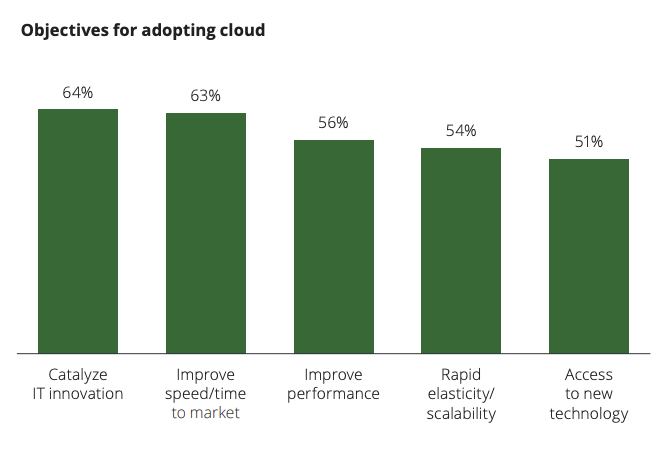
#5 The global IT outsourcing market is forecast to grow by $98 billion during 2020-2024.
#6 Outsourcing is an engine of innovation. Outsourcers and their clients are often under pressure to achieve more, so they tend to incorporate the latest technology and techniques into the working process, which results in increased efficiencies.
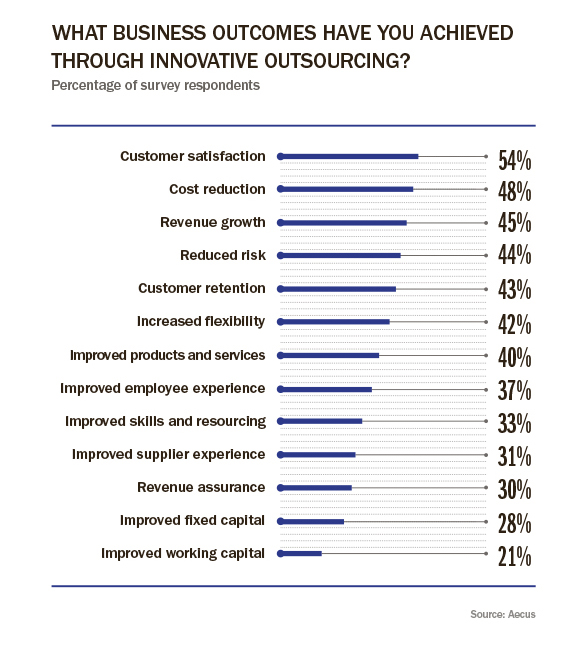
#7 A $121.14 million drop in non-IT operating costs corresponded to a $96.14 million increase in IT outsourcing spending.
#8 The service experience is reported to be the same for 58% and better for 26% of the organizations than when they perform the same service in-house. Accordingly, the app development outsourcing service-success rate can be considered moderate, with 84% of organizations experiencing the same or better service outsourcing application development.
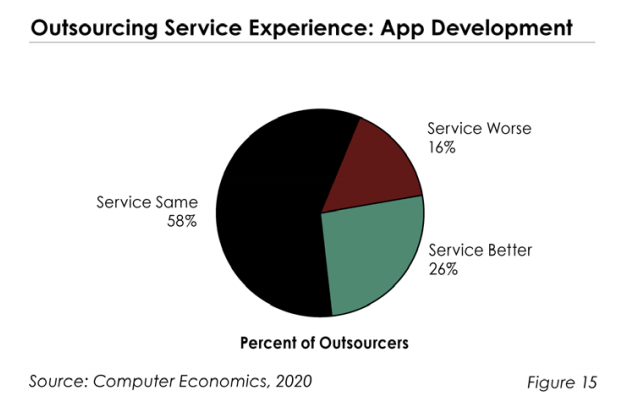
#9 43 percent of U.S. companies are outsourcing jobs from the IT industry, with cost savings being the main reason (44%).
#10 Strategic outsourcing is recognized to be one of the main reasons for IT budgets to continue becoming increasingly more adequate. It has the power to make room in the company’s budget and eventually allows for more flexibility.
The cost of hiring in-house
Well, it is clear that IT outsourcing has been experiencing an upward trend for the last couple of years. And mostly so for cost reasons. However, the potential gains are not that explicit as it may seem. So, for those who doubt the credibility of the statement or find it too vague to rely on, we’d like to break down the true costs of hiring an in-house team and compare them to the expenses that IT outsourcing imposes.
It’s no surprise, but this fact can be overlooked sometimes – the IT budget is complex. It covers quite a number of expense categories, including expenses on IT personnel, application software, data center, network, end-user technology, and others. The IT personnel category encompasses all personnel costs, including salaries, compensation, taxes, benefits, recruiting, and training fees. Personnel costs are the category where most cost savings occur when you decide to outsource. Therefore, this is going to be our keen focus area. Below, we will analyze the five major costs associated with staffing a software development team in-house.
1. Hiring
According to the Society for Human Resource Management (SHRM), the world’s largest association devoted to HR management, the average cost-per-hire (CPH) is $4,129, and the average time required to fill a given position is 42 days.
CPH is an American National Standard metric that factors in the total of internal and external costs:
- talent acquisition system costs
- advertising and marketing expenses
- job fair and recruitment event costs
- travel expenses
- relocations fees
- office costs attributed to the recruiting department
- the salary and benefits of the recruiting team that is responsible for job posting, screening, interviewing, onboarding, and training
Besides, the average cost per hire will differ depending on the industry. An average hiring cost in a retail environment is $2,691. Still, for software development roles, it can be higher due to a tighter market for candidates.
The numbers claimed in the recent report by Glassdoor do not differ much from the above data. It is concluded there that the average U.S. employer spends about $4,000 and 24 days to hire a new employee.
Time to hire is the metric that directly impacts the total hiring cost. Different roles require hiring processes of various lengths. IT positions generally take longer to fill as they are more specialized than others. But in certain regions, it can be easier and faster to do.
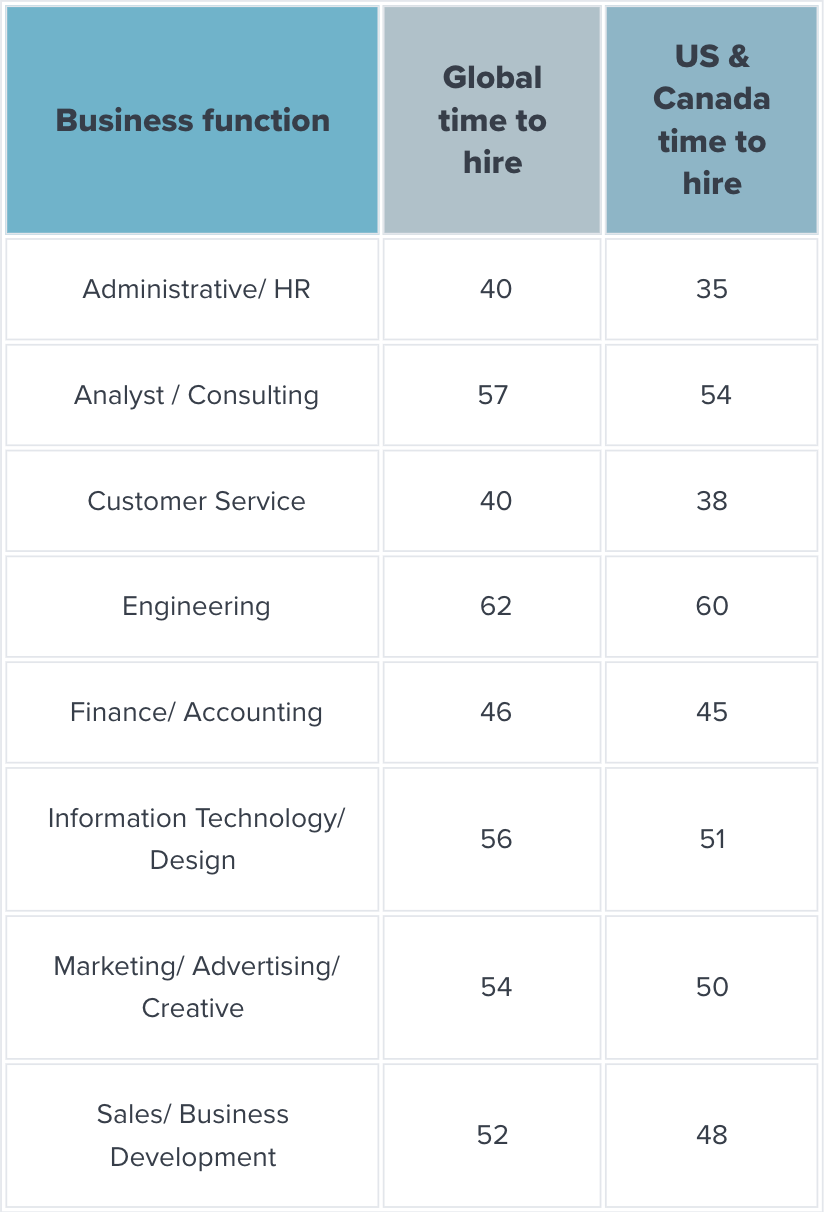
There is another crucial thing to consider. Software development is a highly competitive market, so talent acquisition there is getting only more complicated. Tier-1 countries are now facing a growing skills gap.

Hiring talent is the second top challenge for engineering managers. Competition from other employers, lack of the needed work experience, the right technical and soft skills, or interest in the organization are among the top reasons for organizations’ struggles to hire suitable candidates.
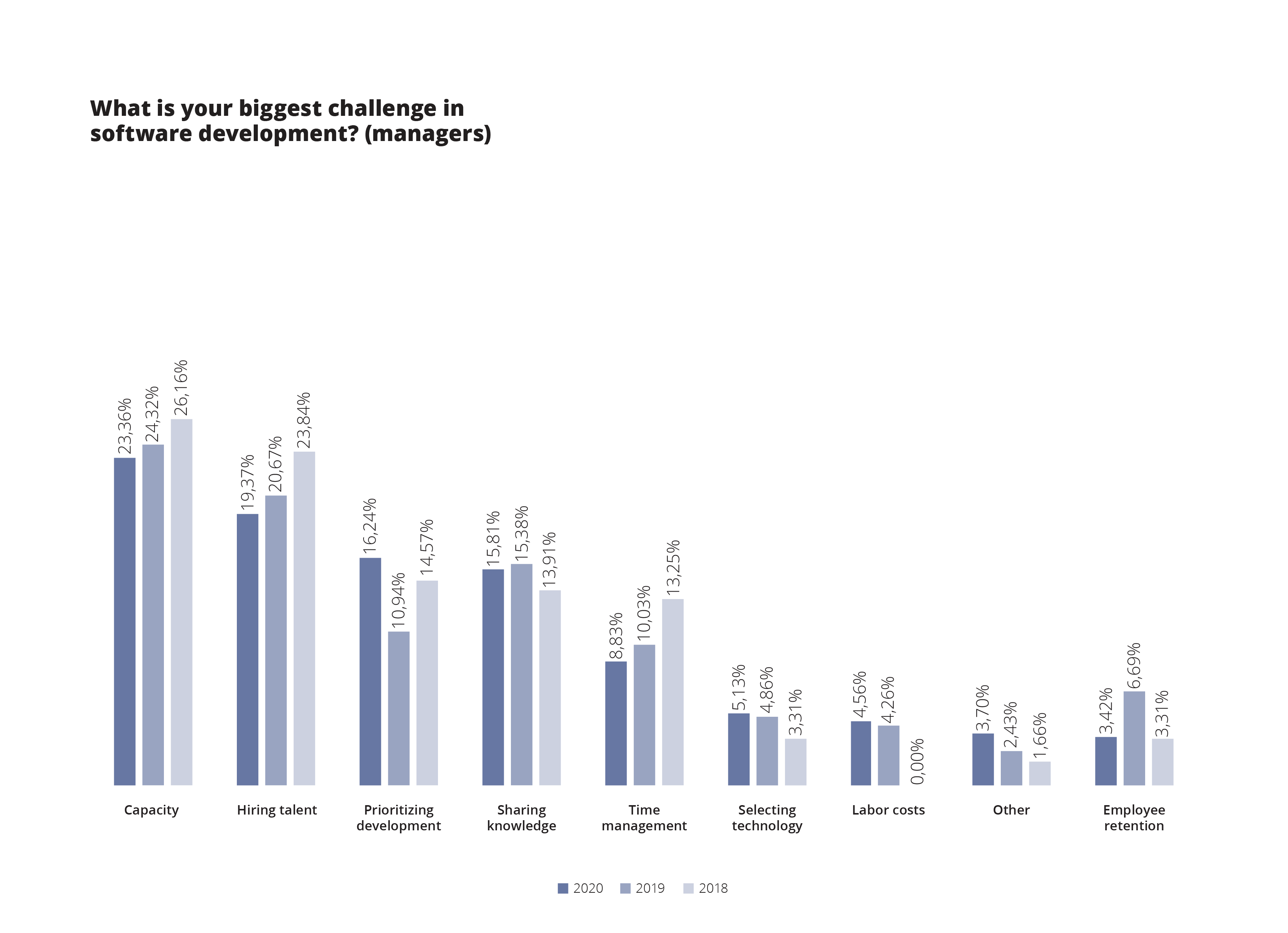
Reportedly, 39% agree that there’s a talent gap or a shortage of IT talent. Despite that, however, some companies choose not to hire IT personnel at greater levels due to the limited budget, having difficulty filling some open positions, or unfavorable business conditions. A fifth of respondents admitted that outsourcing was a more attractive option at that moment than hiring full-time staff.
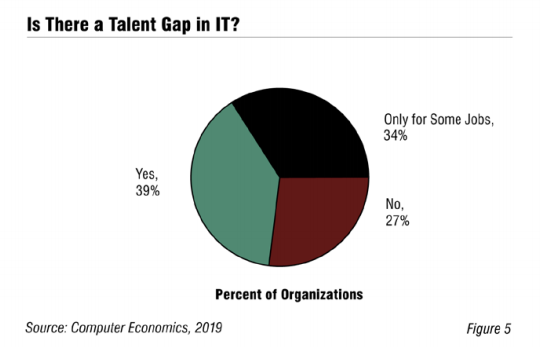
So, choosing in-house development, an organization should be prepared to spend much effort and money on finding the required talent.
2. Software developer salaries
As Jim Collins said in his book Good to Great, "People are not your most important asset. The right people are. Get the right people on the bus, the wrong people off the bus, and the right people in the right seats."
And these right people usually expect to be paid in accordance with their educational background and qualification.
The salary you pay to a developer will depend on their education, skillset, and experience, which is obvious. But how big a base salary figure will turn out to be is also influenced by the project type, company size and age, and importantly, the developer’s location. These are some essential influencing factors to keep in mind.
Some regions are outliers when it comes to salaries. Differences in cost of living, local demand for tech talent, candidate’s experience, and taxes are the key determinants for huge discrepancies in payroll figures.
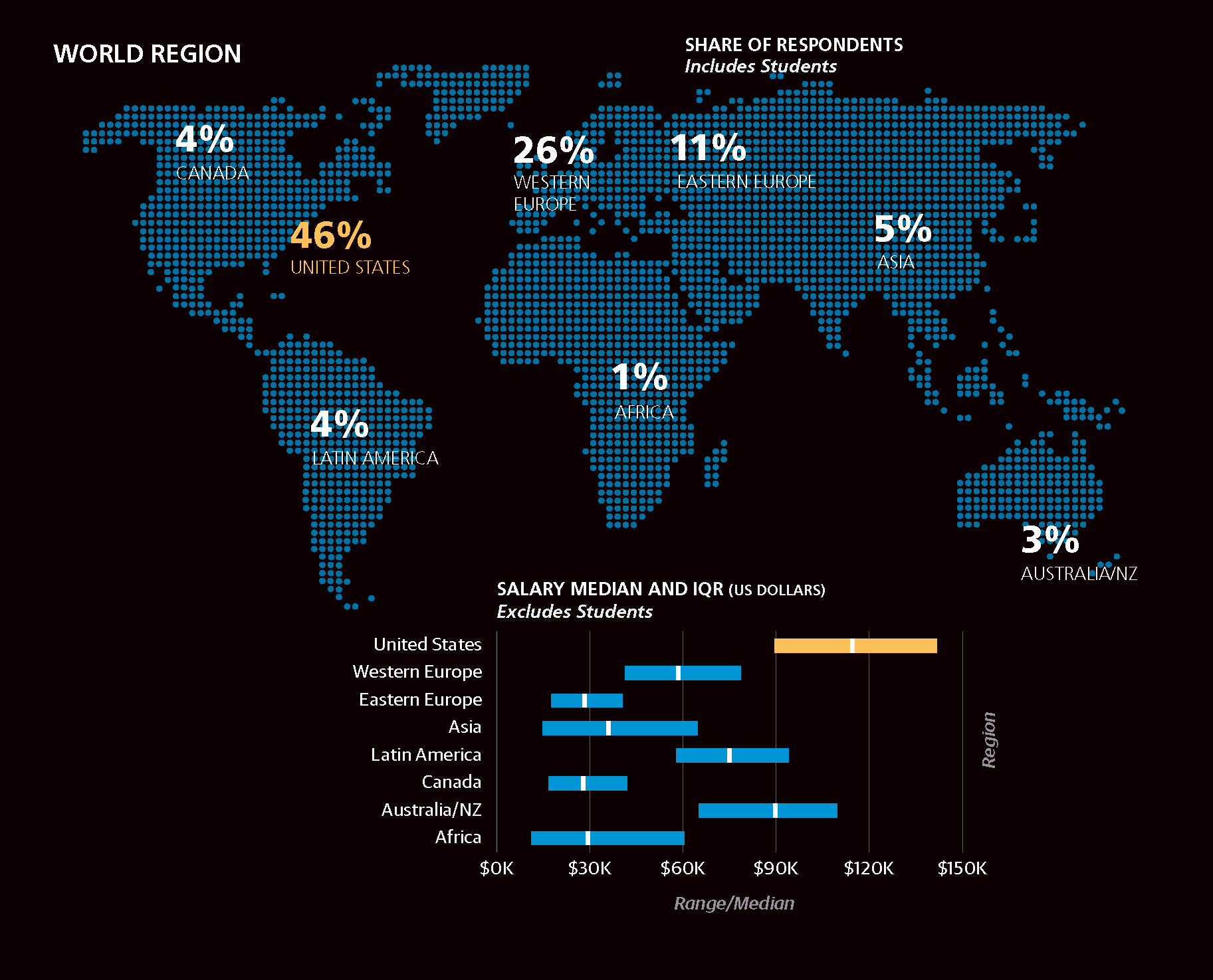
Outsourcing of software development to nearshore and offshore destinations can save a company 40% to 75% of its overall spendings. You can see for yourself that the difference in hourly rates of IT specialists is actually significant:
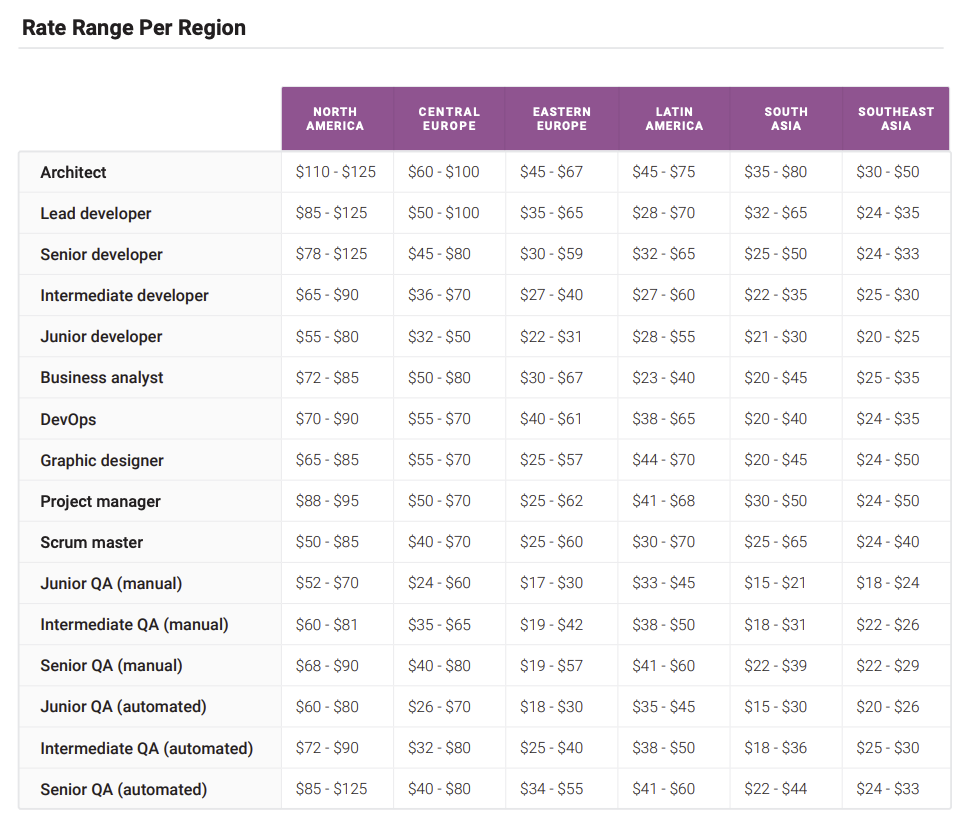
But as we already know, the cost of hiring a new employee is not their base salary alone. It also includes the cost of recruitment and other expenses we are about to discuss.
3. Benefits
Most IT workers in the United States and Europe expect to get a comprehensive benefits package along with their new job. Access to a range of benefits that are designed to make one’s career rewarding can make a huge difference. Health and wellness, flexible work schedule or workplace, time off, paid sick leaves, health and life insurance, retirement programs, reimbursement of education fees, and more – this is an approximate breakdown of benefits most employees in a private sector should expect. According to the Bureau of Labor Statistics (BLS), benefit costs account for 30.0 percent of total employee compensation costs within the private sector, with wages averaging $25.18 per hour and benefit costs – $10.79. Within the information industry group, this ratio is 67.1 to 32.9 percent.
Thus, according to BLS statistics, a software developer with a median hourly rate of $51.73 will actually cost their employer $77.09 per hour. This way, the median annual wages of $107,590 turn into $160,342. Impressive, isn’t it?
As a result, hiring employees in-house in tier-1 countries can turn out much more expensive if you add all the benefits to developers’ net salaries. An environment in Ukraine proves to be more welcoming for overseas clients who search for specialists capable to meet their software development needs.
4. Social security
Social security contributions are compulsory payments that confer an entitlement to receive a future social benefit. Calculating them is, in most cases, a complex task. Still, it’s also undeniably a big part of the financial and administrative side of entrepreneurship. Payroll taxes, as these contributions referred to in the U.S, must be paid by the employer, employee, or both if a person either works for a company full-time or is self-employed. Each tax comes at a different rate and can total up to some hefty amount of money deducted from an employee's salary.
In the U.S. specifically, these taxes include federal income tax, state and local income taxes, Social Security and Medicare taxes that are paid by an employee and Federal Unemployment Tax Act (FUTA), State Unemployment Tax Act (SUTA), State Disability Insurance, and Workers’ Compensation that are paid by the employer. What is more, each tax has its remittance and reporting rules, so that making mistakes on payroll taxes can attract very expensive penalties.
In Sweden, by contrast, monthly social security benefits can vary from $1,300 to $3,000 and pension benefits – from $220 to $330 for each software developer, not to mention some other groups of compensation costs and fringe benefits.
In order to not confuse you with too many numbers, we included the approximation of social security contributions into the total of benefits.
5. Equipment and overhead
Software development is an office-based job. Therefore, besides hiring expenses, developers’ salary, benefits, and social security contributions, there will be other equipment and overhead costs.
Overhead is the ongoing expense of operating a business or, as it is also known, indirect costs. It includes office rent, office space use (heat, light, and more), office equipment and consumable supplies, accounting services, payroll services, legal and audit fees, travel and entertainment costs, internet costs, etc.
These days, the basics for high tech workers have to include not only some physical space but also a computer that can cost up to $1,000+ and licensed software, which incurs another $500 to several thousand. In Sweden, overhead costs that an employer pays for each developer monthly can be as high as $600. So, if we take into account such one-time overhead expenses as computer setup, software, and furniture cost, then the total will go up to $3,000.

The cost of outsourcing software development
By comparison, when choosing to outsource software development, you should expect to save not only on the developer’s salary but also on hiring, benefits, social security contributions, and overhead.
IT outsourcing is understood as contracting with a service provider (like Vilmate) to perform an IT function instead of performing it internally. From the client’s point of view, any function that is not served by its own IT personnel is considered outsourced, be it outsourcing onshore, near-shore, or offshore. Moreover, one is free to delegate this function execution to a third party fully or partially. This implies that you, as a client, have three options:
1. Project outsourcing: It is the most hands-off model of cooperation of all. In this case, a service provider is an organization that manages and performs the work. By project outsourcing we mean full outsourcing of IT functions to another software development company.
Finding specialists locally can be challenging and costly, so project outsourcing helps organizations address these two issues. Project outsourcing grants access to a global talent pool and eases the burden of hiring and managing staff. The third-party software development agency takes over the project in its entirety, which is especially beneficial to clients who are not well-versed in technology and have little idea how to verify candidates’ expertise.
2. Staff augmentation: Compared to full project outsourcing, staff augmentation gives a business more control over the recruitment process and project management. Suppose you intend to hire a temporary employee or contractor who will continue working under the IT organization’s supervision but will be managed directly by your team. In that case, you should look for staff augmentation services, not outsourcing.
Arguably, this model proves to be the most advantageous one as it allows finding the right balance between local and outsourced resources. It gives a business more flexibility in how large the workforce is, so you can easily ramp it up or down as needed.
3. Consulting: The difference between a consultant and a contractor hired to augment an existing in-house team comes down to the scope and depth of involvement. Functions of an IT consultant can and sometimes should be outsourced to a third-party vendor. Consultants work with organizations to find the best solutions and offer expert advice.
Whether you are unsure where to start or need to fine-tune the already existing processes, consulting will address your needs. To identify areas of improvement and possible gaps, IT consultants examine the company’s processes and operations and suggest best practices aimed at revamping what is already at hand. Consultants usually have extensive experience in the domain of their expertise and have the practical knowledge that a client can benefit from.
The total cost of outsourcing
For our cost comparison, we’ll be using the same criteria that we referred to, explaining where extra costs of hiring an in-house team come from.
Hiring. At this point, you can, without hesitation, take a load off your mind. Choosing to outsource software development, you not only save the effort of recruiting the right candidate but also save the money that this search would otherwise cost you.
The recruitment, training, and onboarding of a quality workforce are on us.
Partnering with a software development vendor can help businesses save on local recruitment and, at the same time, get access to markets with wider tech talent pools.
Software developer salaries. As a rule, software engineers’ salaries in such popular outsourcing destinations as Eastern Europe are lower per se – the corresponding infographics are available for your reference above in the article. Outsourcing lowers labor costs. The main reason for this difference is the cost of living, which, in turn, significantly drives down operating expenses.
Benefits and social security. A business that outsources IT functions should also expect that hired specialists will pay much lower taxes. And what is more, there will be few to no benefits that the client will be legally obliged to cover.
The tax structures in Eastern Europe or India are different from those in the United States or Western Europe. Given the fact that salaries are lower, too, clients will certainly find themselves in a position to enjoy substantial economic benefits by opting for outsourcing.
Equipment and overhead. IT outsourcing providers calculate software developer rates in such a way to cover the main overhead costs as well. The client won’t even know about the one-time equipment expenses or ongoing workspace maintenance costs. In the case of outsourcing, management- and HR-related costs can also be considered overhead, which is why they are still entirely on us.
As a result, in most cases, companies will save quite a bit of money and time by outsourcing to high-quality software development service providers.
Even though there are some additional costs, such as administration and governance, communication with the offshore development center, and international travel between sites, outsourcing generally proves to be more cost-efficient than hiring an in-house development team.
As you can see below, outsourcing to software development services, compared to developing on-site in a Western European country like Sweden, is the clear winner:
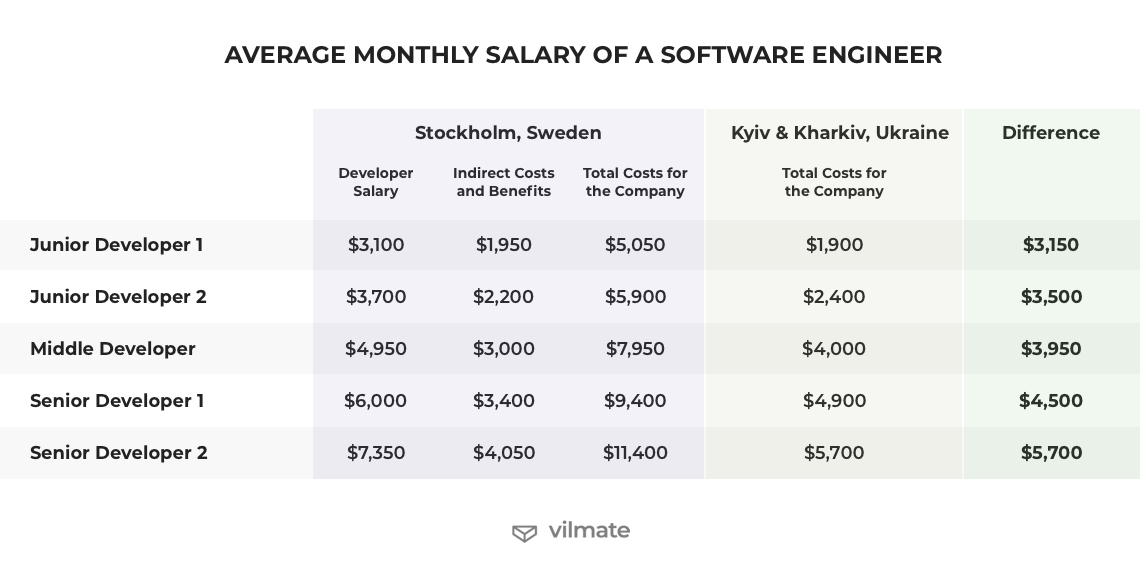
Why you should outsource with Vilmate
If you’ve decided to try outsourcing to a software development company, you should note that not all IT companies are equal. They all offer different pricing models to follow and define different terms of collaboration to fulfill. At Vilmate, we will do our level best to ensure that each client’s business goals are matched with the most appropriate value proposition, be it full project outsourcing, staff augmentation, or consulting.
We’ve been in the software development industry since 2012 and have loads of experience delivering long- and short-term projects to dozens of businesses worldwide. Our offering is diverse enough for you to select the kind of involvement you will be most comfortable with: Time & Material, Dedicated Teams, or Fixed Price – you share the needs to be accommodated, and together we pick the most suitable project delivery approach.
By getting in touch with us, you will get access to a talent pool that we are proud to have developed during the past years. The Vilmate team is IT and non-IT specialists who qualified for and passed a stringent selection process to later on give it one hundred and ten percent working on your project. Our aim is your satisfaction and success. Our toolset in accomplishing this is our extensive software engineering expertise, extraordinary customer service, and reliability.
Contact us today to see how we can help reduce your costs and enhance your software development productivity and results!

© 2022, Vilmate LLC




